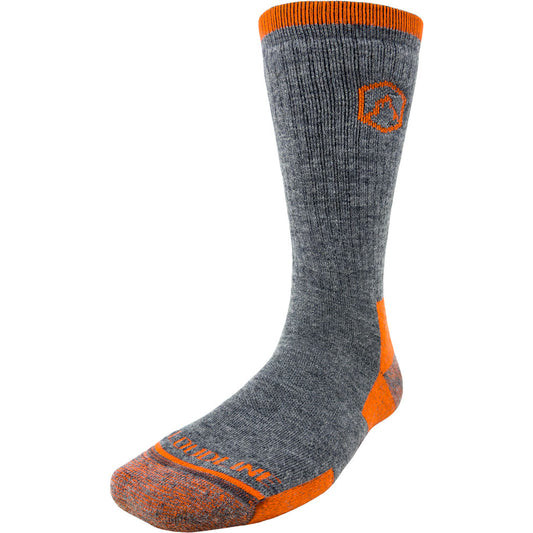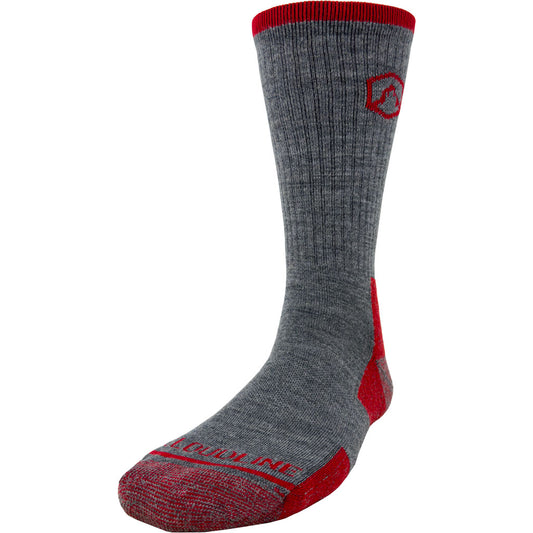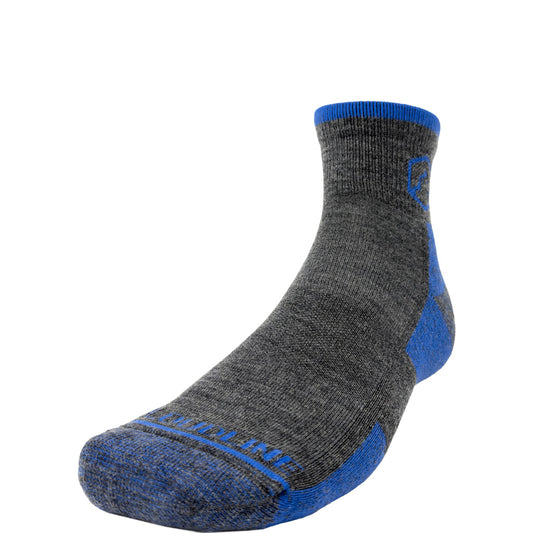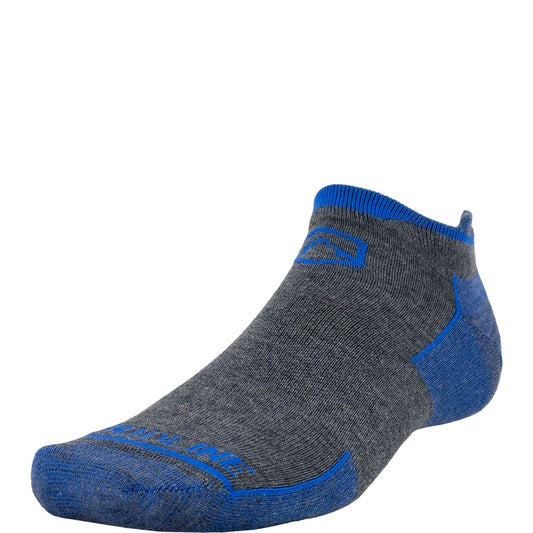
How to Buy the Right Sleeping Pad
Sleeping pads are the layer in your outdoor sleep system that rest between you and the ground. Obviously, comfort is a significant factor in how plush and puffy your pad is, but insulation is the primary purpose of these gear pieces. Searching for the perfect pad might feel like swimming in a sea of R-value and inflation methods, but with this guide, you will be on your way to warm and cozy nights outside in no time.
First, let’s tackle the four sleeping pad styles on the market.
Closed-Cell Foam Pads

Foam sleeping pads are the cheapest and most durable option. These pads use only foam to offer comfort and an added layer of warmth, and their durability allows campers and backpackers to use them directly on the ground. Closed-cell foam pads also tend to be lightweight, though their inability to deflate or compress makes them particularly bulky. Many backpackers decide to strap these types of pads to the outside of their packs to save space inside, which can cause issues when bushwhacking or going through tight spaces. Closed-cell foam pads also have a disadvantage to other options when it comes to comfort, and can be difficult to keep clean. This style of sleeping pad shines when added to a pad of a different style for protection, comfort, and additional warmth.
Air Construction Pads

Sleeping pads made of a laminated fabric with space to inflate, and dominate the sleeping pad market. These come in insulated and non-insulated models, with the insulated pads being the only choice acceptable for 3-season use. Air construction pads have the pros of being comfortable, fairly lightweight, and highly packable. Durability is the constant concern with these pads, however, because the seams or thin material can pop, rip or get small holes that make sleeping out an uncomfortable and cold experience. From experience, I can say to never use an air construction pad without having a fully stocked repair kit with you! There are also models of air construction pads with pump bags that take away the heaving and hard-breathing of blowing one up after a long day of hiking, or ones that can be purchased separately.
Self-Inflating Pads

Self-inflating pads are made of an open-cell foam, which fills up with air and expands when a valve is opened. Though these pads offer significant stability and take away some of the bulkiness of closed-cell foam, they also tend to be less comfortable than air construction pads without offering much solution to the problem of durability. Self-inflating pads are simple to use and generally comfortable but often are left behind because of their added bulk and weight compared to air construction models.
Camping Mattresses

Camping Mattresses are the final category, for car-camping use only. These are spacious, heavy, bulky and incredibly comfortable models that could not be taken backpacking, but make sure you sleep soundly while glamping. These tend to come with an electronic pump that plugs into your car.
Now, knowing the general styles of sleeping pads, you can think through your needs and dreams for camping and backpacking. Depending on your current and future adventures, you can choose the option that best fits you. When considering these factors, think through your complete sleep system (more information on building a sleep system here). A sleeping pad is just a piece of a whole, and it is interdependent with other elements of your sleeping system. Take into account your sleeping bag, clothes, shelter and other gear when deciding on a sleeping pad to add to the mix.
First up is the primary reason to own a sleeping pad: warmth.

Warmth While I was growing up, my family loved camping. We always had a tent and sleeping bags, ready for a spontaneous night under the stars. However, my family lacked the knowledge and planning to go on trips without some minor disaster setting in at one point or another: it was part of the thrill. Flash to the Pecos Wilderness in the shoulder season: my family set up our inexpensive tent, noticing some thin tears in the rain fly and tent walls (it was from Walmart, after all). We set up the inside, with no footprint and no sleeping pads beneath our sleeping bags. It was a wonderful evening, full of campfire smell and a sense of wholeness I often feel when taking the time in nature to rest and simply “be.” But after we turned in, it started raining. Hard. And it kept raining. Did I mention I was wearing cotton pajamas? Well… needless to say, that was a horribly cold and wet night for us. Our sleeping bags were soaked through the bottom. This story goes awry due to many mistakes, the most big-picture of them being a lack of a complete sleep system. However, it tells us everything we need to know about warmth and sleeping pads.
Warmth is lost by conduction, convection, radiation and evaporation; or more simply, by touching something colder than you, by a fluid or gas in the environment around you, by heat radiating off of you, and by sweat or liquid evaporating off of your skin. In my story, my family was losing heat by touching the ground beneath us (which was much colder than our bodies), by the cold wind over us and cold water on us, and by our bodies’ heat continually radiating off with only non-insulating materials around us (like my cotton pajamas). These all should be addressed in your sleep system, and a sleeping pad is part of that. The amount that a sleeping pad insulates is measured in R-value. As a guide:
- R-value < 2: For warm, mild climates and summer use only.
- R-value 2-4: For most 3-season use.
- R-value 5+: For winter and cold climate use.
While these are helpful numbers, R-value is not consistent through all circumstances. Firstly, companies have no regulations or standards for how they test and rank R-value. Secondly, there are four ways we lose warmth, which change with climate, location, elevation and sleep surface. Be wise about these inconsistencies by considering your sleep system as a whole in the coldest, wettest, and most un-insulatory conditions you plan to sleep in, and think of your sleeping pad options working in tandem with the full system to keep you warm.
Comfort
Though warmth takes top priority, having a bad night of sleep is no joke when you are hiking for miles the next day. A comfortable sleeping pad masks bumps and uneven ground beneath you, providing stability and cushion for your whole body. Personally, I take the comfort of an air construction pad over other options for camping and backpacking. The most comfortable choice out there is a camping mattress, and the least comfortable is a closed-cell foam pad.
Weight and Compression
Weight and bulk are factors that can make or break a good sleeping pad for you. The most obvious example is camping mattresses. Though they win in the comfort category, these are completely impractical and unusable in the backcountry. They are heavy and cumbersome, even when deflated. In the same way, the weight and compressed size of a sleeping pad could make some options impractical for your adventure dreams. Use these as a general guide:
- >26 oz: Camping
- 14-26 oz: Backpacking
- <14 oz: Ultralight backpacking
Personal Needs
To buy the right sleeping pad, it needs to fit you and your full sleep system well. Pay special attention to the shape of the pad. How will the shape work in your shelter? Compatible pads can be strapped together to help close the gap between for couples. Should you find a set of compatible pads? Another factor is width and length. Sleeping pads come in many sizes, specially tailored for different body types and sizes. Which size works best to keep you warm and comfortable? Lastly, there is personal preference. As a side sleeper, I tend to turn quite a few times through the night. An air construction pad allows me to comfortably sleep on my side, even though the transition can be a little bit bouncy. Consider how you sleep best, and be sure to drop by a gear shop to test some types and models out.
With these considerations, you can have the assurance that your journeys won’t turn out like my family’s camping trip, and instead can focus on adventuring and enjoying nature.
Sleep tight!





1 comment
This is very helpful as I am planning to go on a hike next month,